Evidences that Giants once roamed the Earth
The origins of giants trace back to antediluvian times when, according to ancient texts, they inhabited the Earth. Greek mythology, in particular, is rich with stories of these towering beings. Who were these colossal beings that roamed our planet in a remote era?

In June 2011, Pravda online (https://english.pravda.ru/science/118302-giants_cemetery/) revealed an incredible discovery: a group of archaeologists had found a mysterious burial in the jungle of Central Africa, near the city of Kigali, Rwanda. About 200 perfectly preserved skeletons of gigantic humanoid creatures were found inside 40 communal graves.
The creatures were about 7 meters tall and their heads appeared to be decidedly large and disproportionate to the rest of their bodies. At first, the archaeologists themselves hypothesized that could be visitors from another planet, who died due to a catastrophe, but no sign of landing and the wreckage of the spacecraft were found.
This is not the first time giants were found in Africa. In 1936 french archaeologists and anthropologists Marcel Griaule and Jean Paul Lebeuf during their excavation campaign in present-day Chad found inside some funerary mounds human remains much larger than normal ones.
Marcel Graule (1898-1956), among other things, is the same person who first made us know something more about the Dogon: he was the head of several expeditions on the African continent, from 1931 to 1946, including the one (which is remembered as the Dakar-Djibouti Mission) in which he studied the incredible cosmology of that people.
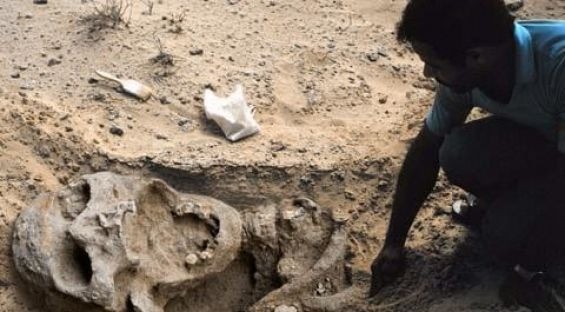
Giants in Egypt
Ancient Egypt provides evidences of the existence of giants. Not long ago, in one of the Egyptian tombs found in the site of Saqqara, one of the oldest and most important places of Egyptian civilization, the mummy of a 2.5 meter tall man was found. The body had no nose, no ears, and his mouth was very wide and had no tongue.
According to archaeologist Gaston de Villars, the age of the mummy was approximately 4 thousand years. The enigmatic person was buried in the same way as an Egyptian nobleman, surrounded by domestic objects, food, works of art, which would have accompanied the deceased on the journey to the afterlife. However, as it later turned out, not all the objects found in the tomb belong to the Egyptian culture or even to any of the human cultures. Among the artifacts was found a round disk of shiny metal covered with strange characters, a metallic-colored costume with the remains of something similar to plastic shoes and some stone tablets filled with images of stars, planets and strange machinery.
Even the sanctuary in which the mummy was buried had strange characteristics. The tomb was made of a material unknown in antiquity. The tomb was literally carved into the rock, so that the walls were as smooth as polished marble. It almost looked like it had been made with very high precision laser technology. Among other things, the surface of the stone seemed to be molten. The tomb was then decorated with a lead-like substance.
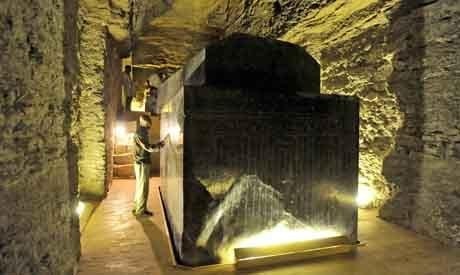
Recent discoveries
In 1992, a Catholic priest named Carlos Vaca opened to the public his closet full of bones collected in Ecuador, bones that became a puzzle for the scientists who analyzed them.
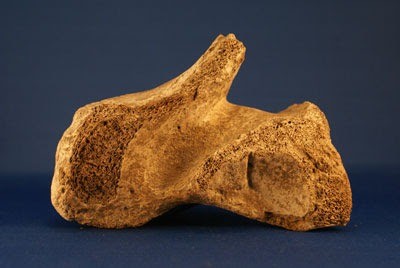
Fragments of a skull and a tibia were identical to human ones but with much higher proportions.
Among the remains preserved by Carlos Vaca is that of a molar. Scientists seem to confirm that it is a human tooth. It is an enormous molar: what mouth could contain it other than that of a giant?
Furthermore in 2009 in the dried up basin of Lake Makgadikgadi, in the Kalahari Desert in Botswana, among hundreds of more conventional finds, four stone axes measuring just over 30 centimeters came to light. Making the necessary proportions, they should have belonged to men of at least 3 meters.
The giants in the Bible
The origin of those who were called giants dates back to antediluvian times. In those times, according to ancient texts, they populated the Earth. Even those who were born from the union between sons of the gods and earthly women would have been 'giants on the earth' (Genesis 6.4).
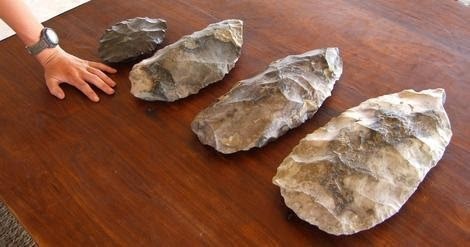
In the Old Testament several giants are named, such as the Anakites, the Rephei, Og and the well-known Goliath, defeated by David. In the Bible we read:
“David ran against the Philistine... he took out a pebble, slinged it, hit Goliath on the forehead and he fell face down to the ground [...], David ran and stood over the Philistine, grabbed his sword, took it out of the sheath and killed him by cutting off his head”(Samuel 1, 17-51)
Since then his triumph has served as a symbol of the victory of the "good" over the violence of the "evil". This Old Testament story is one of many traditions that tell of how a man can defeat a giant through cunning. According to ancient texts, Goliath reached three and a half meters in height, and his armor must have weighed more than 100 kilograms.
Og is another giant mentioned in the Bible. Moses defeats him during the conquest of Canaan by the Israelites (Numbers 21, 32-35).
“Because Og, king of Bashan, was the only survivor of the Rephaim. Behold, his bed, an iron bed, is it not in Rabbà of the Ammonites? It is nine cubits long and four cubits wide, according to the cubit of a man”(Deuteronomy 3:11)
Og must therefore have been a colossus of about 4 meters in height. According to Jewish mythology, Og was one of the numerous antediluvian giants. Among them he was the only survivor, because the water barely reached his knees. Noah is also said to have taken him into the ark during the flood. The giant had no room inside the ship, but he was able to sit on the roof.
Another biblical episode takes place near Hebron. A lineage of giants who descend from Anak, the Anakites, has lived there for years. In particular, three sons of Anak, Achiman, Shesai and Talmai, throw the Israelites into panic during their journey towards the promised land (Numbers, 13, 22 and 31 ff.). There is a correlation with the Greek world, which venerated a lineage of gods and ancient kings, the Anaki. The name again derives from the biblical giants.
The giants of Greece
Greek mythology abounds with captivating stories of giants. The travels of Ulysses, king of Ithaca, are universally known. In them we talk about the meeting with the Cyclops Polyphemus.
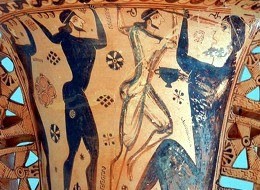
Mythological scholars believe that the skulls of dwarf elephants, found in the Greek islands of the Mediterranean, gave rise to the saga of the Cyclops.
Those skulls had a large hole at the height of the trunk, which made one think of the orbital on a giant's forehead. In Greece, however, there are many places connected to the wanderings of Ulysses, considered historical scenarios of some events. One of these is the "Cyclops' cave", located near Maronia, north of the country.
Excavations have revealed that this cave served for centuries as a home and place of worship. In the center of the entrance there is a large stalagmite which has been given the name "stone seal of Polyphemus". Not far away there is a large tunnel, called "the giants area".
English giants
English tradition is full of fantastic and impressive stories about the birth of hills, valleys and other landscape forms. Thus the giants would have repeatedly thrown mounds of earth and thrown imposing blocks of rock into the sea. In their poems the Anglo-Saxons often mention giants who supposedly existed before their arrival in England.
In ancient legends, the famous megalithic sanctuary of Stonehenge in southern England is called the site of the “dance of the giants”. The wizard Merlin, with his magical powers, would have transferred that stone colossus from Ireland to its current location.
Giants in Germany
Also Germans have their giants. According to legend, Riibezahl, the genius of the mountain of giants, took on numerous guises. He would have helped the travellers, but he would also have taken revenge on his mockers: so it is said in the ancient texts. There are many giants who play a role in the Rhine sagas.
A giant named Tannchel blew up the rocks that stagnated the waters of the Rhine between the Black Forest and the Volgi. They then say that Emperor Maximilian himself defeated the last giant of the Odenwald in a medieval tournament held in the city of Worms, located on the left bank of the Rhine.
Who were the giants?
This question remains still unanswered. Who are these gigantic beings that walked our planet in an extremely remote era? Is it perhaps a human race that became extinct following a catastrophic natural event that modified the structure of the Earth and erased our gigantic ancestors?
Could they be the descendants of the mythical Atlantean civilization that once existed across the planet? How else to explain the continuous archaeological finds that seem to defy common sense and the classical chronology of the development of human civilization?
These discoveries, which the scientific community still struggles to explain, open a strange chapter in the history of our planet. In many parts of the world, apparent evidence of a civilization of giants has been found over the centuries. Is it possible that before the birth and development of the human race, there existed a population of giants?
Do we really have to rewrite the history of our planet? This is exactly what the finds found in various places around the world seem to suggest.












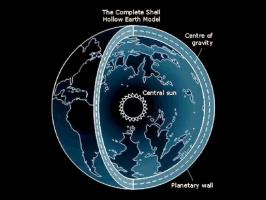

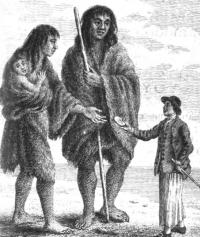


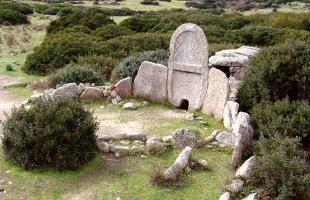
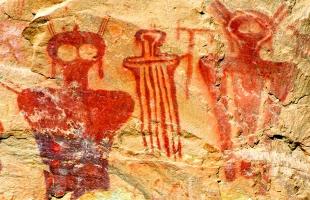
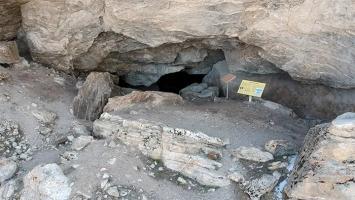








Comments